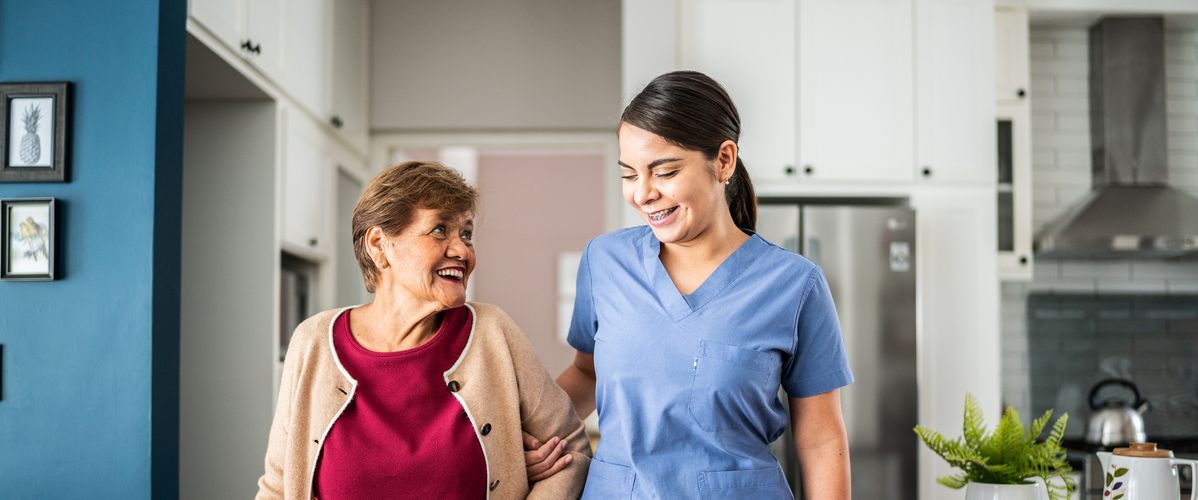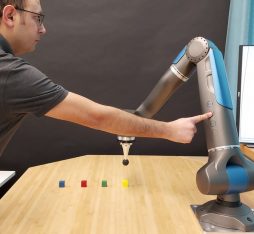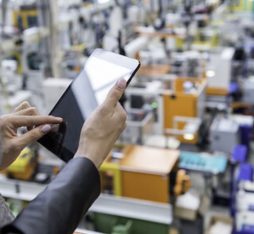• British neurotechnology start-up Charco Neurotech has developed the CUE1, a non-invasive vibrating device that patients wear on their sternums, which helps to reduce PD motor symptoms.
• At the same time, advances in neural prostheses and soft robotics are opening up new perspectives to improve PD patients’ mobility, while other innovations are using AI to facilitate remote testing and diagnostics.
Can a simple IoT device really make life easier for PD patients? Enter the CUE1, a small form factor wearable placed on the sternum, which makes use of high-frequency vibration to mitigate Parkinson’s motor symptoms. “It is a non-invasive device, which minimises the risks associated with the use of invasive neurotechnology for patients,” explains Lucy Jung, the founder of Cambridge-based start-up Charco Neurotech, which has already delivered the new device to 3,300 patients in the UK. “We’re currently taking a break from the roll-out, as we’ll shortly be launching a more advanced version, the CUE1 Plus.” The name chosen for the device refers to cueing, the use of temporal or spatial stimuli to facilitate repetitive movement, which can help reduce the adverse impact of Parkinson’s on patients’ mobility. “When we talked to patients, some of them explained, for example, that using a massage chair helped alleviate their symptoms.” Reflections such as these became the point of departure for Jung, who decided to focus her research on the benefits of stimuli.
Rhythmic auditory, visual, and physical stimuli can help patients to walk.
French neurologist Jean-Martin Charcot was the first to notice that Parkinson’s patients experienced relief from their symptoms after train and carriage journeys, and subsequent research has confirmed that rhythmic auditory, visual, and physical stimuli can help patients to walk and improve their balance when in motion. As Lucy Jung explains, the need for therapies for the neurodegenerative condition has never been more urgent: “The number of people affected by Parkinson’s has risen steadily in recent years to the point where it has exceeded forecasts to become one of the fastest-growing diseases.” According to the WHO, the number of Parkinson’s disease sufferers has doubled over the last 25 years to reach 8.5 million cases worldwide.
Advances in neural prostheses and soft robotics
Promising treatments for Parkinson’s and other neurodegenerative conditions are increasingly in the news. In November 2023, a team of researchers and neurosurgeons from France and Switzerland announced the successful testing of a neuroprosthesis to correct walking disorders associated with Parkinson’s disease, which can “reduce falls and the phenomenon of gait freezing – when patients feet become glued to the ground while walking.” In the United States, an interdisciplinary team from Harvard and Boston University recently reported on the successful development of a robotic exosuit that enables Parkinson’s sufferers to walk without freezing. According to the researchers, the device worn on the hips and thighs, which exerts gentle pressure to help patients to lengthen their stride, offers a demonstration of the “potential of soft robotics to treat frustrating and potentially dangerous symptoms” of neurodegenerative conditions.
https://www.youtube.com/watch?v=pAWrypkeDXM
Patient monitoring made easier by AI
Neurotechnologies can also do much to improve the diagnosis and monitoring of patients. In the UK, PD Neurotechnology, a start-up founded in 2015, has created a wearable that uses machine learning to detect and assess patients’ symptoms. According to a clinical trial conducted by the company, in more than 95% of cases, estimations of severity provided by the PD monitor are comparable to expert medical evaluations, which is a highly significant rate given the complexity of this type of diagnosis and monitoring. For Professor K Ray Chaudhuri, Head of Parkinson’s Foundation Centre of Excellence at King’s College Hospital, scientific progress of this type can a significant impact on improving patients’ quality of life and well-being, which mainly depend on constant monitoring of the disease.
 Lucy Jung
Lucy Jung











